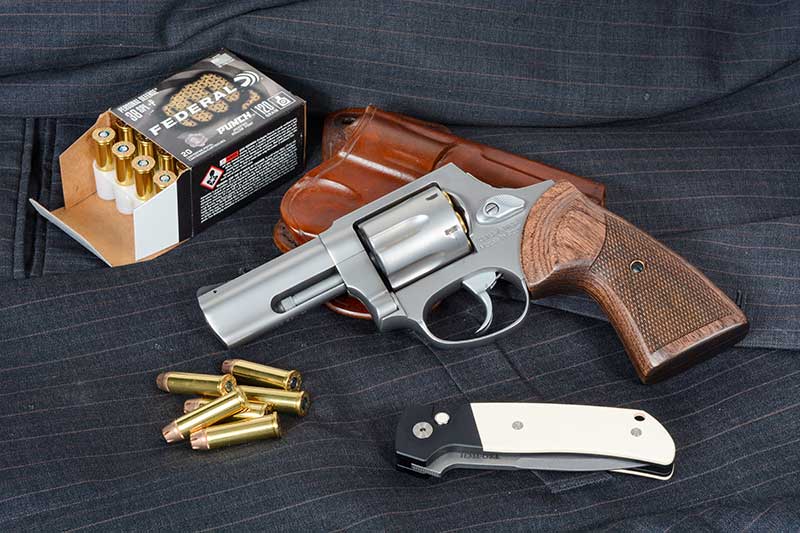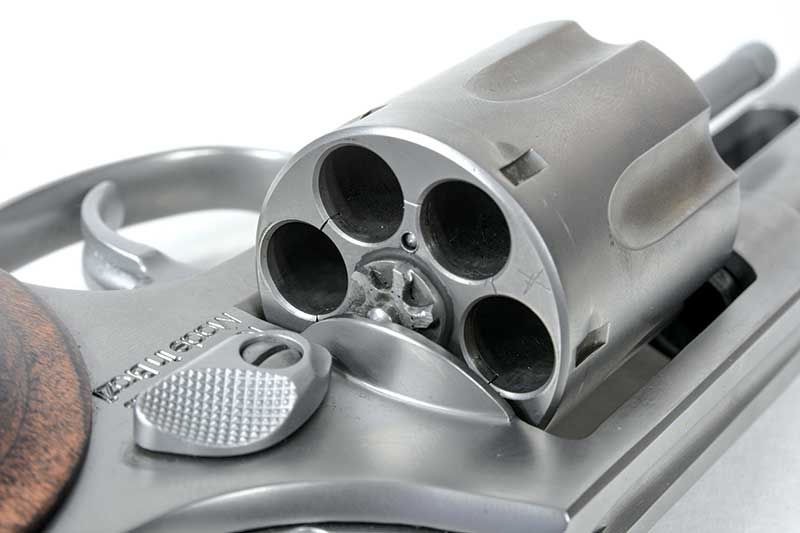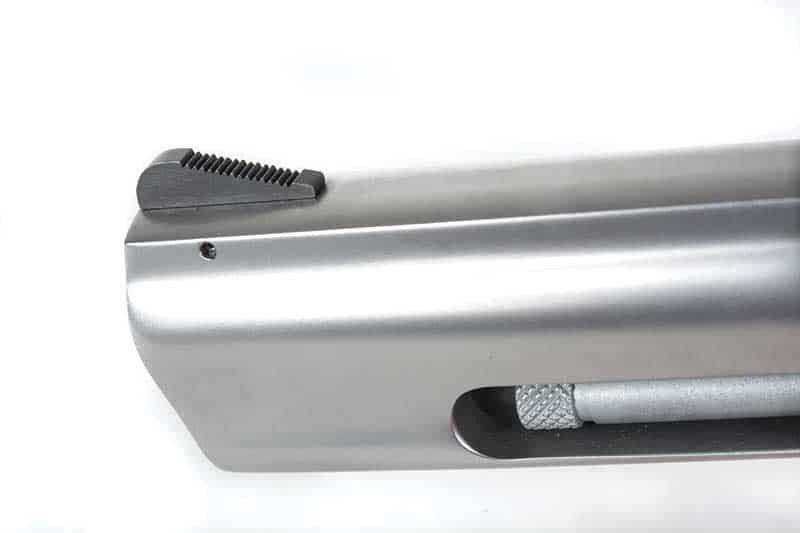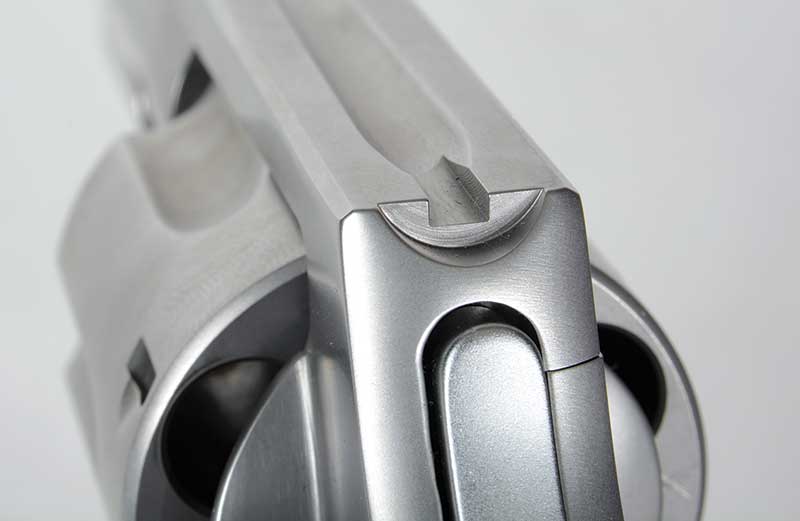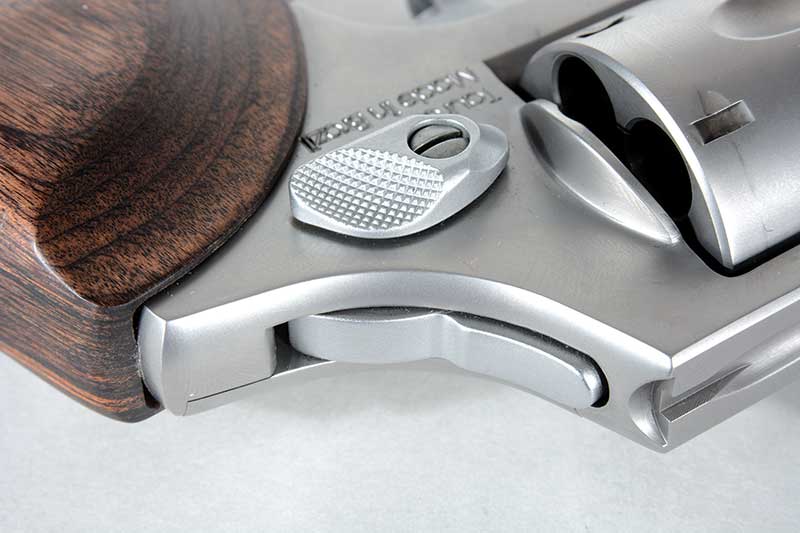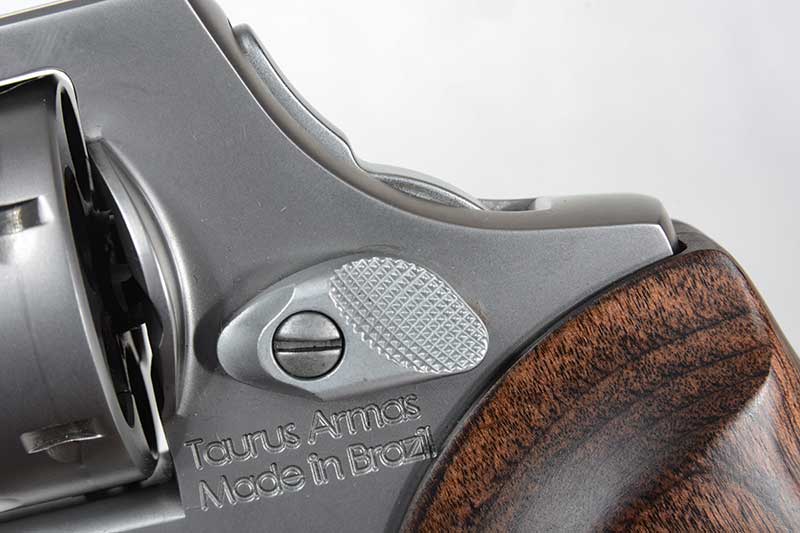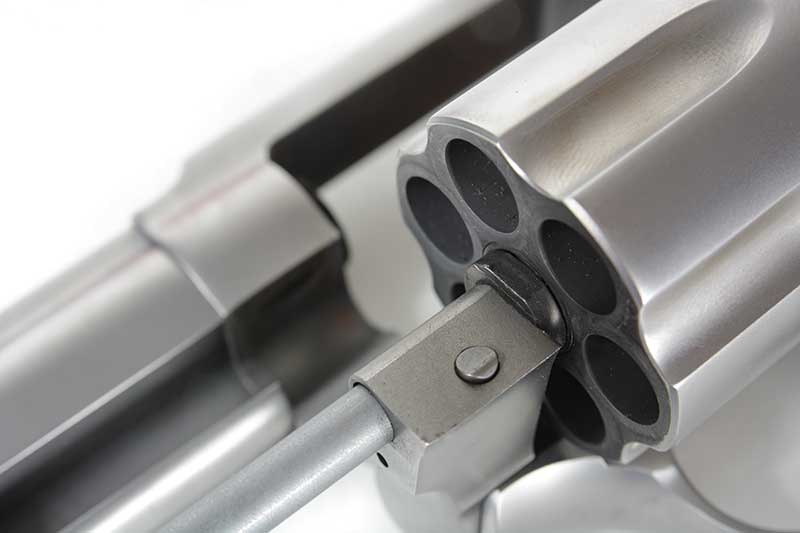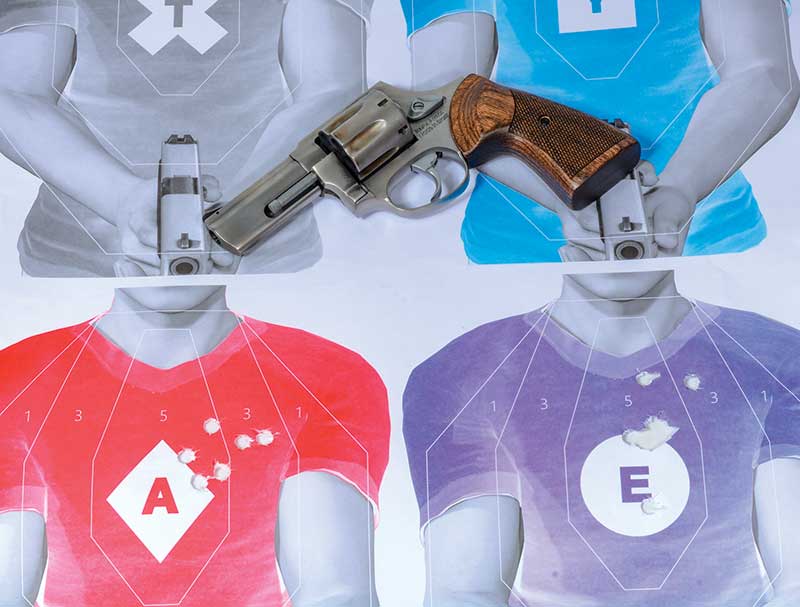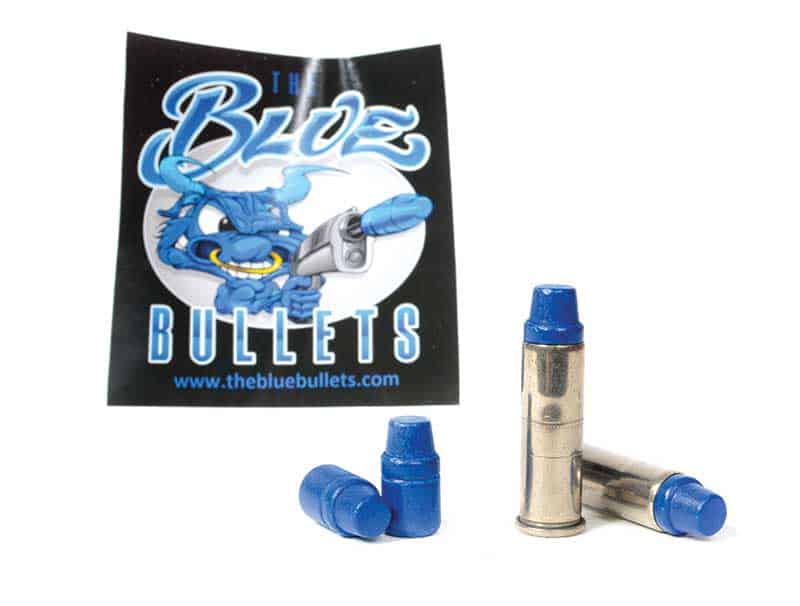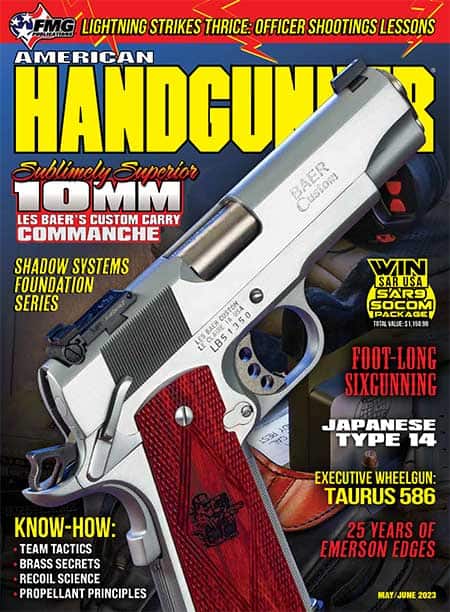The Taurus 856 Executive Grade
I was about to be late meeting the president of Taurus USA to shoot the new 856; I was at my fourth stop trying desperately to find some — any — .38 Special ammo, and the lady at the pawn shop was giving me grief because I had asked the dude sitting next to her for ammo before asking her. Apparently, she was the owner; he was the self-described “guy that works next door,” and she was more interested in making sure I understood that than she was in selling me anything. Fortunately, he politely interceded and reminded her she had some old boxes of .38 wadcutter behind the counter.
“The boxes are worth more than the ammo is,” she told me. At first, I thought this meant she was going to lower the price: Clearly, my “pawn fu” was weak that day. Sixty bucks later, I walked out with two boxes of wadcutter dating to the Eisenhower administration, some of which had primers so swollen you couldn’t even close the cylinder. Not the best start, but grist for the mill and enough to make my appointment to start putting the 856 Executive Grade through its paces.
Designed By … Me
It isn’t often that I look at a newly released gun and say, “huh — that’s how I would have done it.” This made the Executive a pleasant surprise for me. Three-inch barrel, no hammer spur, fixed sights, and stainless with an even, bead-blasted finish that glows rather than shines; it is how I would have designed a defensive revolver. And, indeed, I have; my preferred carry .357 has exactly those specifications.
For those unfamiliar with Taurus nomenclature, the 85 is the small frame revolver (what S&W would call a J-Frame), and the added “6” indicates the cylinder holds six shots of .38 Special instead of the usual five. The Executive Grade line, of which the 856 is the flagship, is an upgraded version of the standard model, analogous to what some of the other in-house custom shops turn out and is intended as a premium carry gun. In addition to the bead-blasted finish, the charge holes in the cylinder have been chamfered to ease reloading, and not only has the hammer spur been removed, but the cocking notch also is absent, making this a trigger cocker only. There is no single action option.
Carry Friendly
Bobbing hammer spurs on defensive revolvers date back to Fitzgerald’s legendary Fitz Special and before, as it keeps the gun from snagging on the draw, especially when carried in a pocket. It also reduces the temptation to manually cock the gun, which can lead to an unintentional discharge or to short stroking the trigger for the second shot, either of which could have catastrophic consequences.
Similarly, 3″ seems ideal for a concealed carry revolver. Snubs are hard to shoot, and full-sized 4″ revolvers are hard to hide. There are people who can do both things well, but most of us need a little help. The added inch of barrel length over a 2″ snubbie helps with sight radius and adds weight to tame recoil, which can be vicious in small revolvers. The Executive weighs 1 lb., 9 oz. on my postal scale, about a half-pound less than my 3″ Model 65 .357, which is a K-Frame — a closer match to Taurus’ medium frame guns. That may not sound like much, but when it’s on your side for a 10-hour day, you’ll appreciate the difference.
The Executive packs a usable front sight. Traditionally, small stainless guns have stainless front sights, either pinned into a shallow recess near the muzzle or machined as part of the barrel. In either case, they tend to demurely excuse themselves into the light on bright days, which is a real problem if you’d like to hit what you’re shooting at. The Executive avoids this problem by using an appropriately bold-blued and serrated ramp front sight blade which is pinned into place.
The rear sight is the familiar square groove cut down the top strap, without the disorienting false-horizon effect of some guns with a curved top strap. While there are benefits to adjustable sights, I prefer fixed on a working gun. After just shy of a couple decades of being armed on a full-time basis, I’ve slammed rear sights into door frames, chairs, parts of cars and other unforgiving surfaces, and I have the dented rear sights to prove it. I won’t say I never carry adjustable sighted guns, but I prefer not to. It’s hard to get much more rugged and snag-free than a slot.
You could be forgiven for associating Taurus pistol designs with S&W and Beretta. They previously manufactured pistols for Beretta in Brazil before buying the factory and were once owned by the same parent company as Smith’s, so it’s no surprise the controls on the 85, as they always have, mirror those of S&W revolvers. The cylinder latch is the customary concave checkered push-to-release design, while the wood grips, designed to give the Executive a more elegant look, evoke the rounded lines of Colt target grips.
Executive Shooting
From that first range trip with my vintage wadcutters, I was impressed with how the Executive shot. I was able to consistently shoot into about an inch and a half or less at 7 yards, with a best 14-yard group of 2.35″ — all standing unsupported. At 25 yards, I put one cylinder into around 3.7″ from standing and shaved a tenth of an inch off when I rested my hands on the bench. And remember, this is a defensive pistol, not a target gun, and that’s all shooting double action. While the trigger doesn’t noticeably stack, it is possible to stage it near the end of its travel by using precise trigger control.
Recoil was about what you would expect for a smallish revolver: on the brisk side of mild, with a tendency to torque in the hand. For those used to auto pistols, a revolver will school you on shooting technique. Even if you don’t want to carry one, the revolver’s unforgiving tendency to punish inconsistencies in both where and how hard you hold the gun, as well as the trigger press, will quickly point out your shortcomings. The harder kicking the gun is, the more dramatically it’ll show up on the target. Or off it.
I fired around 400 rounds through the Executive, including the aforementioned 148-grain mid-range wadcutters from Western, 130-grain FMJ from Federal, Federal’s Punch 120-grain +P jacketed hollowpoint and handholds assembled on my Dillon 550 using Bullseye powder and 158-grain semiwadcutters supplied by Blue Bullets. The most commonly used bullet at the USPSA Nationals for four years running, Blue Bullets get their name from the proprietary polymer coating applied before sizing, which reduces leading. It also reduces your exposure to lead from handling them during loading, something I’ve started to think about after nearly 25 years of handloading lead bullets.
Around 300 rounds, I noticed the screws began loosening on the Executive. The grip screw, cylinder latch and crane screw (which fell off in my hand) all shot loose, as did the ejector rod. This may be a function of thread configuration, as threads can be cut to varying degrees of engagement depending on the use to which the item is put or manufacturing concerns like the degree of difficulty, expense and risk of tap breakage required to cut the varying depths. As it turns out, I did have a “pre-final” model. After speaking with Taurus about this, the company told me they’d already addressed the issue with all new production guns by adding Loctite to the screws. That should help address the issue.
The only other criticism I have of the gun is that the grips, while classy, are a bit narrow for my taste. A slimmer profile makes concealment easier, but I prefer something a little more hand-filling for shooting. They also would not clear a speedloader, which either means using speed strips to reload or “clearancing” the grips, which is likely to make them less pretty. I’d probably change them to something like Eagle’s Secret Service grips. As Taurus pointed out in our conversation, grips are the easiest and least expensive thing to change on a revolver.
All in all, a tidy package capable of doing what it’s for and doing it with class, and one that leaves me wondering what’s next in the Executive line.
For more info: TaurusUSA.com,
TheBlueBullets.com, FederalPremium.com, ProTechKnives.com
Subscribe To American Handgunner

Get More Revolver Content Every Week!
Sign up for the Wheelgun Wednesday newsletter here:

